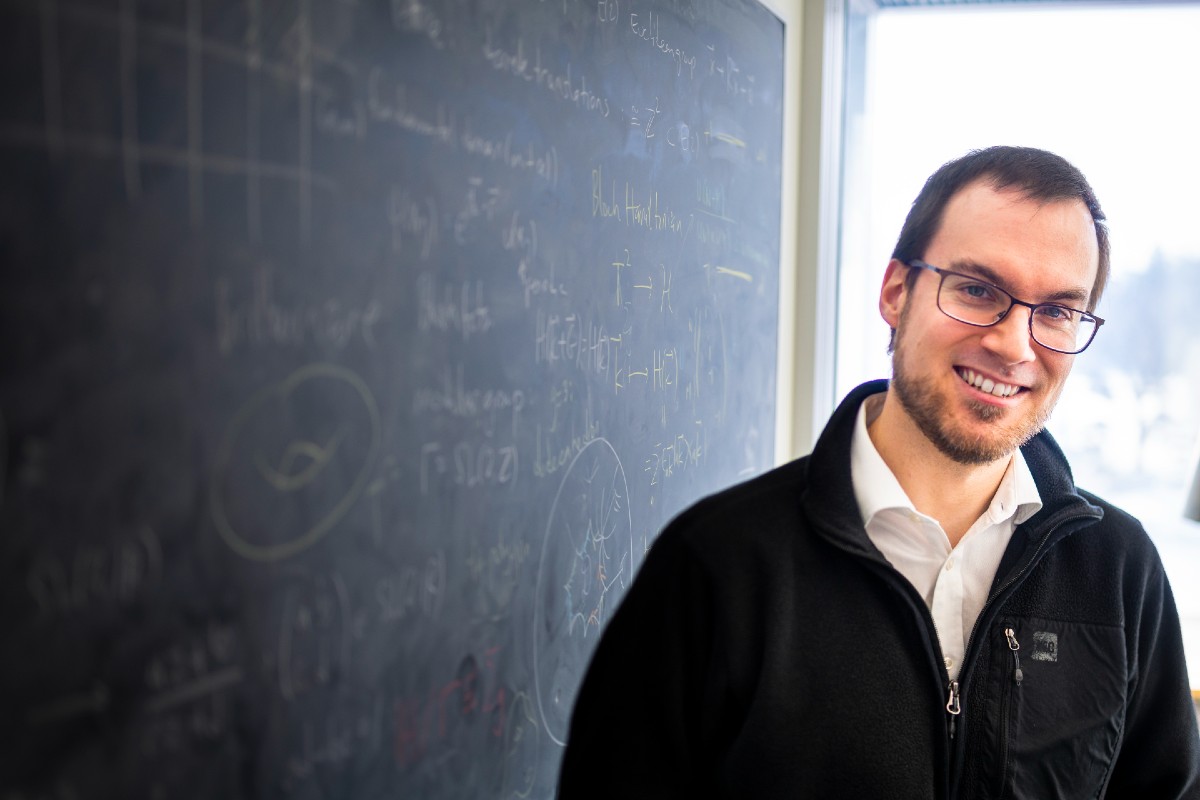New research collaboration between physics and pure mathematics enables new strides toward quantum computing
Andrew Lyle - 22 October 2021

Joseph Maciejko, lead author of the study and associate professor in the Department of Physics. Photo credit: John Ulan
A research collaboration involving University of Alberta physicists and University of Saskatchewan mathematicians is taking the first steps towards understanding a complex new synthetic material—one that could have implications for future generations of computing technology.
“These structures, hyperbolic lattices, are promising platforms for quantum computing,” said Joseph Maciejko, lead author of the study and associate professor in the Department of Physics. “Quantum computing itself is of great interest to industry as quantum computers would operate exponentially faster than a classical computer, powering new advances in technology.”
Modern computer chip technology is made of materials including metals, insulators, and semiconductors. These materials have a crystal structure—meaning that their atoms are nicely organized into a regular three-dimensional lattice. To make chips that work, engineers must understand how electrons propagate in those materials.
“This propagation of electrons is the subject of condensed matter physics,” said Maciejko, whose team worked on the study in collaboration with the Pacific Institute for the Mathematical Sciences. “The basic theoretical framework of condensed matter physics is called Bloch theory, which explains how electrons propagate in crystalline lattices, subject to the laws of quantum mechanics.”
In 2018, a team at Princeton University created a new type of synthetic crystal called a hyperbolic lattice. Their unusual geometry makes these lattices particularly challenging to describe—but in this study, Maciejko and his colleagues have successfully developed an analog of Bloch theory to describe how electrons propagate through these new hyperbolic lattices.
“We found that several of the concepts in the ‘old’ Bloch theory still applied to hyperbolic lattices, but in unusual ways,” explained Maciejko “Most of condensed matter physics and its technological applications are based on ordinary crystalline lattices, which makes being able to apply this field to an unusual new geometry exciting for the purposes of exploring potential avenues for new technology.”
The breakthrough by the team in creating a framework to describe the motion of electrons through hyperbolic lattices brings these unusual geometries one step closer to being used in real-world applications such as quantum computing.
“The fact that hyperbolic lattices can be fabricated in the laboratory, and that we now have a theoretical framework to study them, means that a whole new chapter of condensed matter physics may open up,” said Maciejko.
The study, “Hyperbolic band theory,” was published in Science Advances.